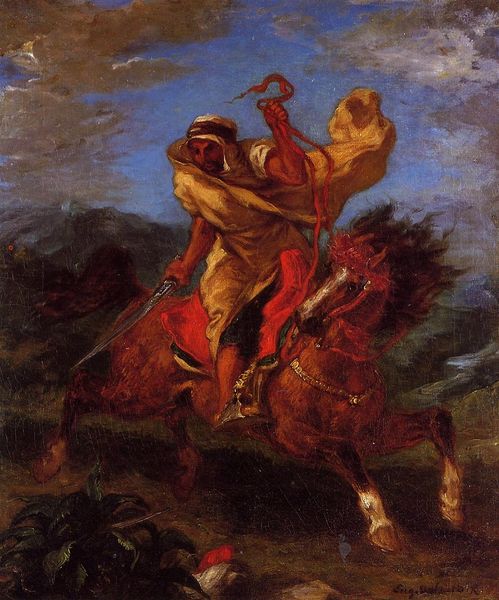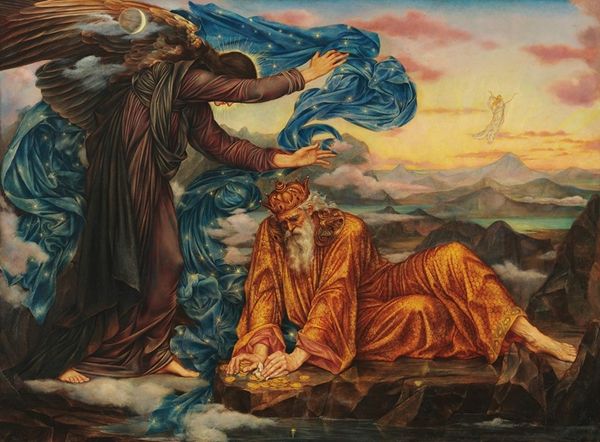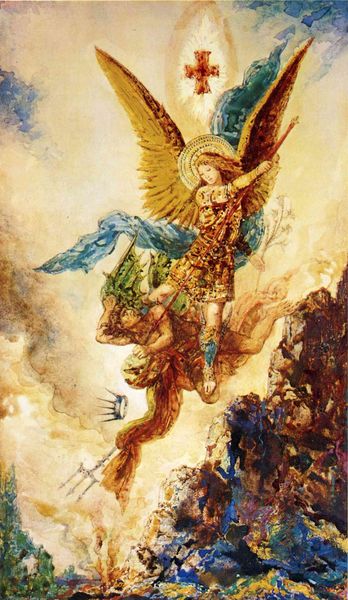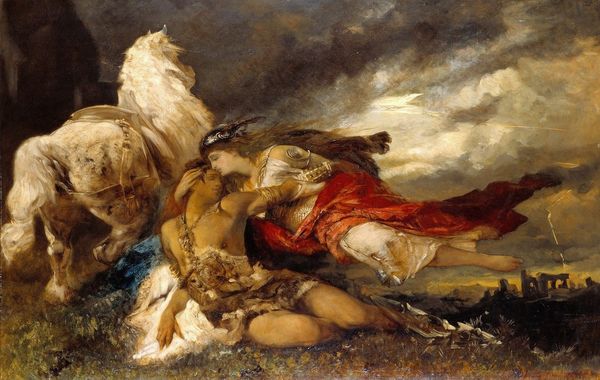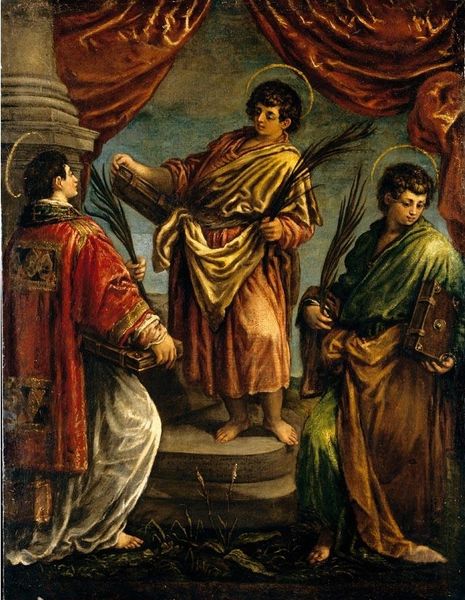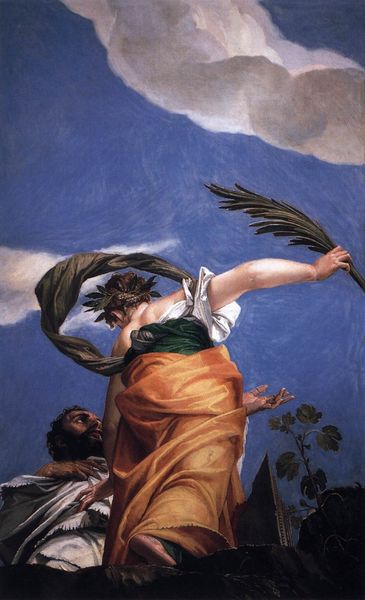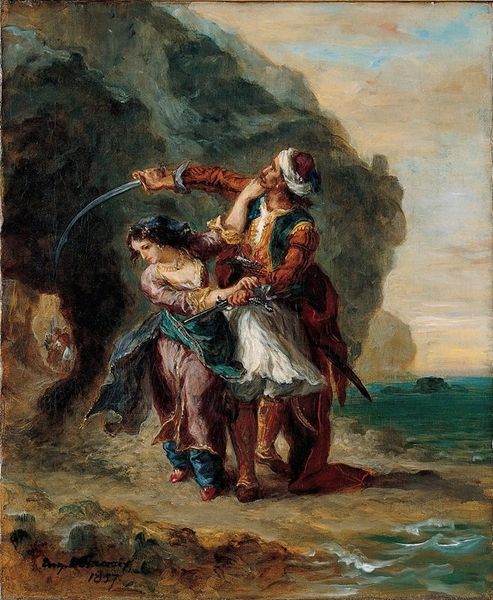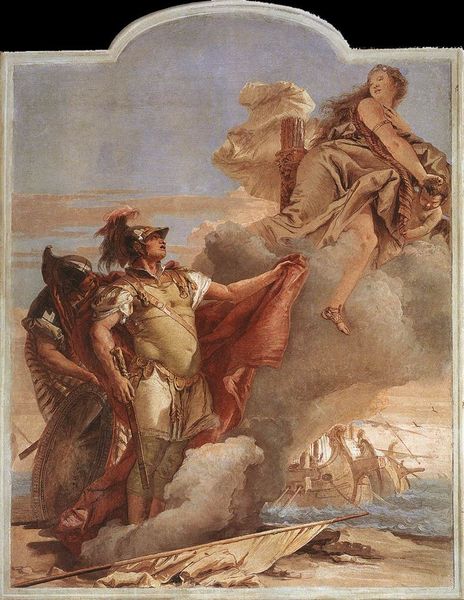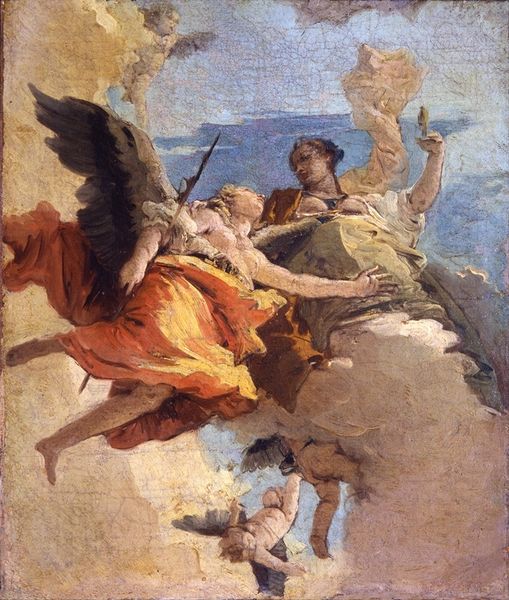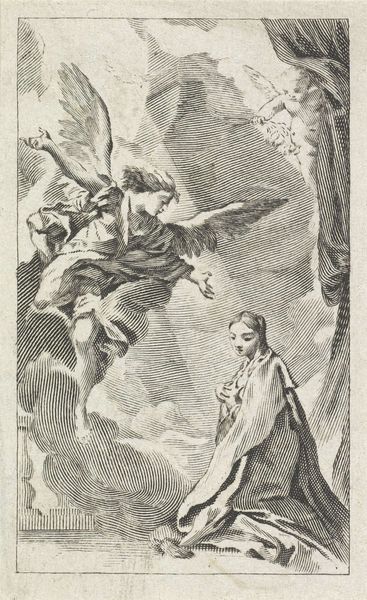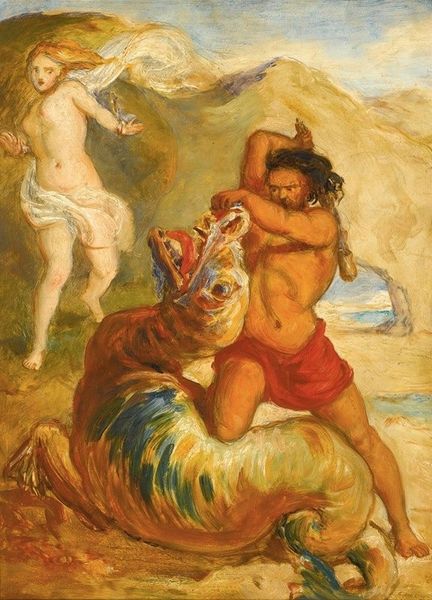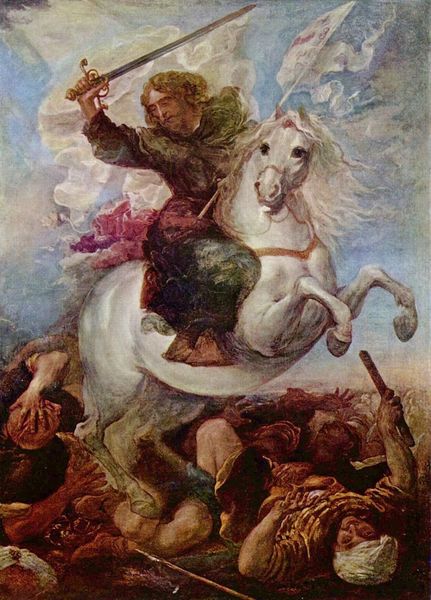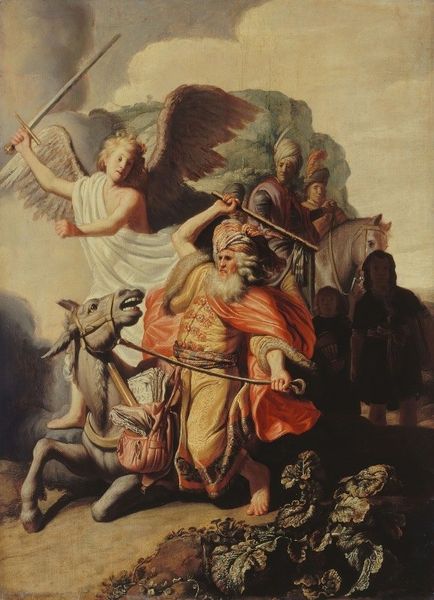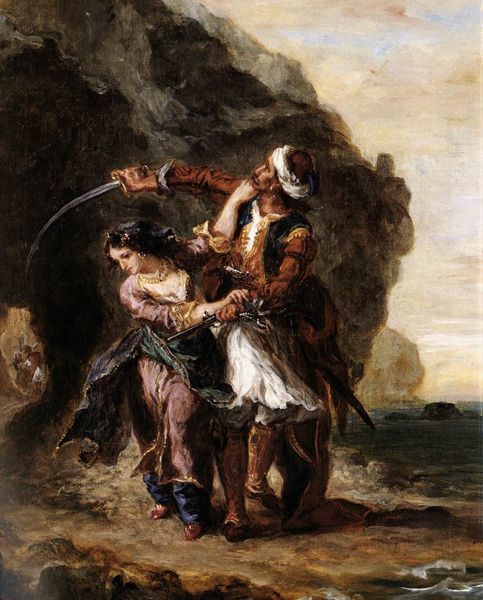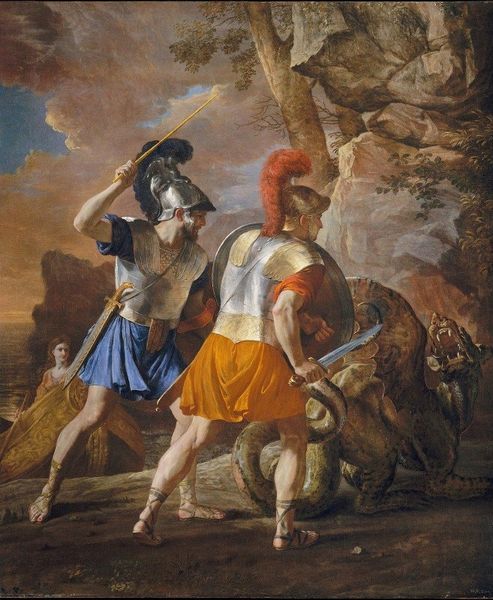
Copyright: Public domain
Editor: Here we have Raja Ravi Varma's "Jatayu Vadham" from 1895, rendered in oil paint. I'm struck by the dramatic tension – you really feel the violence and struggle in this depiction. What stands out to you? Curator: Well, immediately I see Varma engaging with the rising tide of Indian nationalism at the time. By illustrating scenes from the Ramayana, he's making art accessible and relatable to a broader Indian public. He uses European academic painting techniques, like dramatic chiaroscuro, but to depict Indian subject matter. Do you think this fusion was successful? Editor: It's a fair point that the technique seems very Western, but there's an undeniable power in translating a key moment from Indian mythology into this very accessible style. You mention nationalism – how did institutions and galleries factor into making that happen? Curator: Varma shrewdly used lithographic printing. His company mass-produced affordable prints of his paintings. So these mythical scenes, laden with nationalist symbolism, entered Indian homes on a scale never seen before. The images bypass traditional gallery structures, fostering a direct link between artist and the public, solidifying his place as a cultural figurehead. Editor: So, he’s almost circumventing established art world gatekeepers? Curator: Exactly! Varma's art becomes intertwined with the political landscape. Think about who has access to museums versus who can afford a print for their home. It raises important questions about art's public role. What impact might such dissemination have on viewers’ perception of religious and political identity at the time? Editor: It gives you a lot to think about, seeing how art history interacts with public sentiment and broader cultural movements. This painting is much more than just an illustration of mythology; it represents cultural empowerment and innovative marketing strategies. Curator: Absolutely! It shows how art became a vital medium through which social and political ideas were transmitted, constructing our modern understanding of Indian identity.
Comments
Hi there, I hope this email finds you well. My name is Jackson and I came across your stunning artwork on fine art America I was truly captivated by your unique style and creativity. I am interested in potentially purchasing some of your art pieces to add to my collections Looking forward to hearing from you and hopefully adding your beautiful art to my collection. Thank you and best regards, Jackson
Join the conversation
Join millions of artists and users on Artera today and experience the ultimate creative platform.
